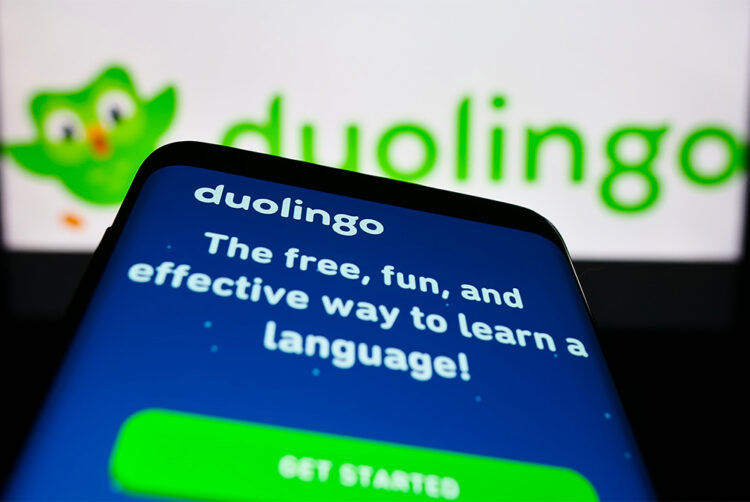What learning Irish can teach you about gaming

Opinion
We need to think bigger than gaming and think ‘gamification’. There are three actions we can take to bring gaming into the marketing mainstream.
What can learning Irish teach us about gaming?
Or should I say: Cén fhoghlaim a d’fhéadfadh an Ghaeilge a mhúineadh dúinn faoi imirt cluich?
A few months back I thought it might be a good idea to learn Irish.
I could speak to my wife in private (providing no one in earshot spoke Gaelic), watch the Irish speaking channel TG4 whenever I’m over, and felt it might be healthy to tax my brain occasionally. Accordingly, I fired up Duolingo and ploughed onwards.
But what struck me immediately is how much Duolingo has now morphed into a mobile game.
Gaming is about emotion… and particularly about satisfaction
‘Double French’ in the 90s involved the teacher playing a tape cassette aloud whilst you sat with a textbook open in front of you.
In 2023, learning a language via Duolingo is an addictive mix of levelling up, hoarding jewels, gaining ‘extra lives’, competing for the top spot onleaderboards, side quests and character avatars.
Duolingo has understood that gaming is not defined by genre, graphics, weaponry or magic spells, or its delivery mechanism — whether console, mobile, PC or VR headset. Rather, it’s the emotional engagement and satisfaction you get from structured achievement.
This is more than gaming. It is gamification: the generation of small, frequent dopamine hits that come from the tension and release of finishing a level, the unlocking of shiny rewards, and those little-but-often nudges towards an overall goal.
‘Winning’ a digital interaction elicits a biochemical response no different from scoring a goal or landing the screwed uppaper ball in a distant waste bin on first attempt.
Gaming goes mainstream
It is no wonder then that gaming has gone mainstream and is now an industry worth $200bn.
It’s because it is universal in its appeal and its effects.
We all like dopamine, or at least our brains do. It shouldn’t surprise us that a media channel satisfying deep human needs has become popular as all media channels are built to reflect or amplify human traits. Television and radio help satisfy our need to stay informed through facts or be entertained through fiction.
The internet has provided us with tools to showcase our inherent creativity and build new communities. Gaming is a channel that allows us to compete and receive reward for winning. None of these needs – connection, creativity, and competition – differ from our fireside ancestors.
Media represents who we are as a species.
But a big unanswered question remains: if gaming is such a visceral channel why is it so underemployed by marketers?
I was asked that very same question last month whilst on a panel at The Future of Gaming, hosted by The Media Leader.
Gaming’s under-representation on plans was always going to come up, together with questions about how we might go about changing this.
And so, after reflecting on the chat my fellow panellists and giving it some further thought, there are three actions we can take to bring gaming into the marketing mainstream.
Three ways to get gaming on plans
First, Reframing.
As previously mentioned, gaming is so much more than mere computerised competition. As learning Irish on Duolingo demonstrates, it’s tapping into something more human. Namely, engagement for reward.
Viewing it as such challenges its narrow categorisation and opens up a broader range of opportunities.
We want marketers to see further than Metal Gear Solid and understand mobile Monopoly. To swap Warcraft for Word Searches. To stretch from Doom into, yes, Duolingo.
Similarly, the recent rise of the ‘M-word’, the metaverse, has also proven in some cases to be misleading and narrowing.
Though the idea of a parallel digital reality where real-life is reconstructed virtually is latterly in doubt, marketers should still not lose sight of gaming in good old fashioned 2D — and that means consoles, PC and, of course, mobile.
More gamers are there than inside a VR helmet.
Second, De-Risking.
We need to ensure brands understand, no matter how complex and overwhelming gaming might seem, that there are affordable, accessible, entry points that use traditional, measurable media metrics.
This is not some alien format from the future and gaming solutions do not have to be disruptive, complex, eye-wateringly expensive ventures. On the contrary, gaming accommodates videos, banners, audio and outdoor ads, and can deliver sponsorship and partnerships of varying levels of sophistication — just like non-gaming media.
Thus, we should be mindful of understanding the range of options within gaming, starting with those that are no more disproportionately expensive or adventurous than channels and formats on the current plan.
Third, Waiting.
Counterintuitive though it sounds, we must not misunderstand the speed at which new media channels are inculcated.
The current mainstays of most media plans have been around a long time. The first TV ad was in 1941. The first radio ad was in 1922. The first press ad was in 1704. Even though the first web banner didn’t arrive until 1994, there are not so many marketers in 2023 who remember a world without display ads.
In short, marketing today is still informed by marketing yesterday.
Following that thought, though gaming has been around for over 50 years, its monetisation via paid ad formats, and the adtech that enables it, is relatively new in comparison to the traditional media channels that are culturally embedded. Though early forays into monetising games through ads could be witnessed as far back as 2000, gaming ads only hit their stride in the last four or five years. In this sense, we can be hopeful. Every new media format was eyed cautiously upon its arrival, from homepage takeovers to in-feed social media ads, both of which are now standard tools in a marketer’s toolkit.
Maybe we just need to be patient and let gaming seep into our industry’s consciousness in a more natural way.
***
The above actions — reframing, de-risking and waiting — should form part of an educative approach for brands, agency partners and all marketers alike.
At its heart, gaming goes beyond jewels, jump kicks and joypads to appeal to a deeper human need: to compete and be rewarded.
Tapping into that is where brands can really earn their power-ups.
Go raibh maith agat as léamh!
 Phil Rowley is head of futures at Omnicom Media Group UK and the author of Hit the Switch: the Future of Sustainable Business. He writes a monthly column for The Media Leader about the future of media.
Phil Rowley is head of futures at Omnicom Media Group UK and the author of Hit the Switch: the Future of Sustainable Business. He writes a monthly column for The Media Leader about the future of media.



